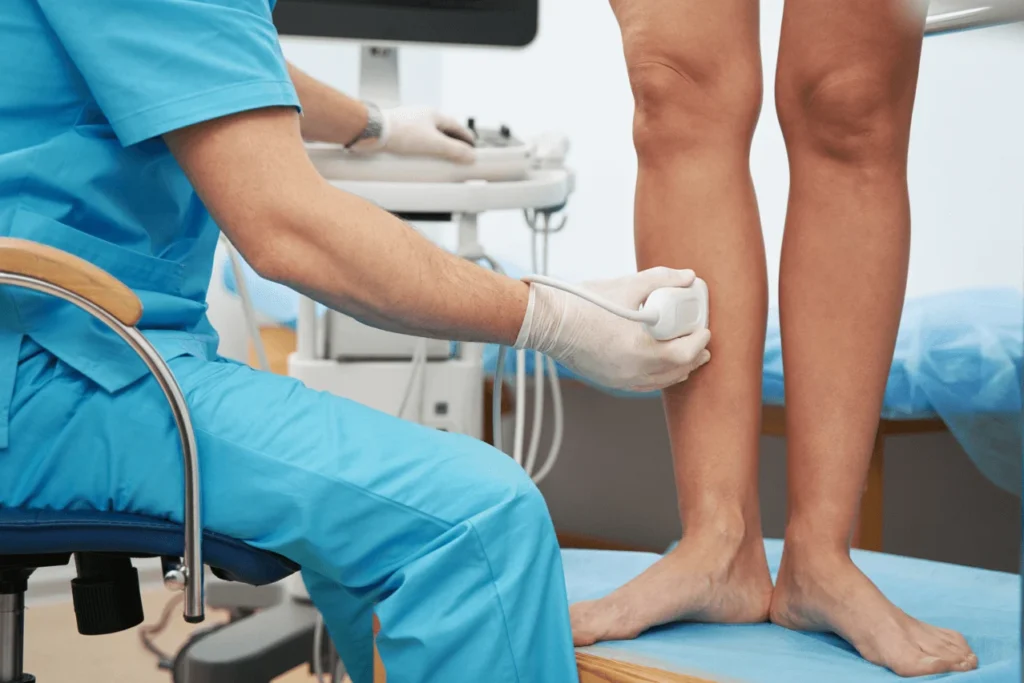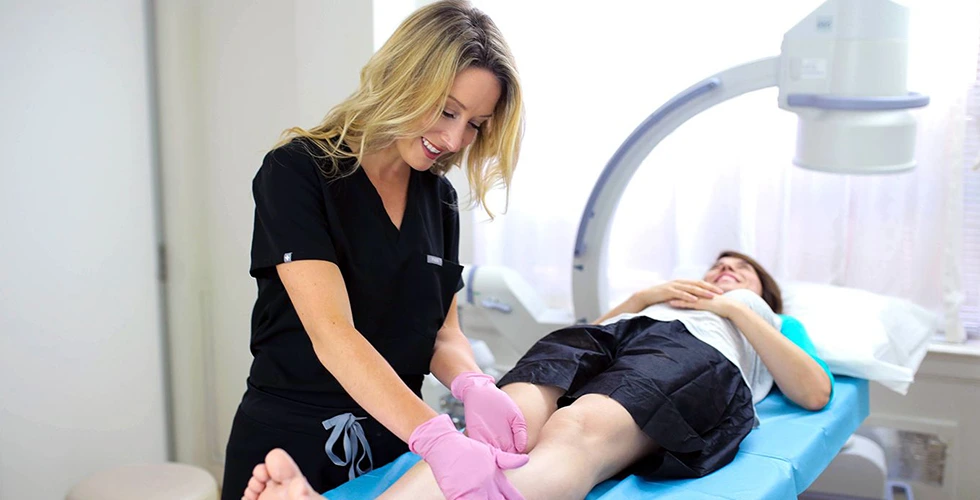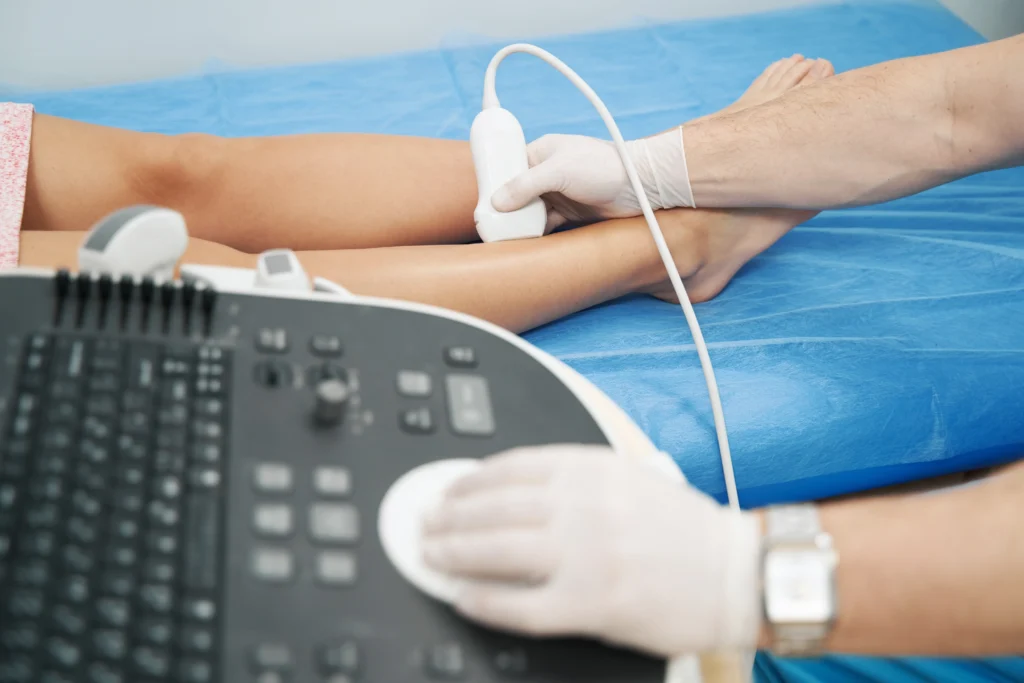Venous insufficiency is a common condition characterized by the impaired flow of blood from the legs back to the heart. It often leads to symptoms such as varicose veins, leg heaviness, and skin discoloration. At Maryland Vein Clinic, we specialize in the diagnosis and treatment of venous insufficiency using minimally invasive procedures. In this article, we provide a guide on how to reverse venous insufficiency and manage its symptoms effectively.
Understanding Venous Insufficiency
Chronic venous insufficiency (CVI) is a condition that occurs when the valves in the veins, which are responsible for ensuring the one-way flow of blood back to the heart, become weakened or damaged. These valves normally open to allow blood to flow upward and close to prevent backward flow. However, in CVI, the weakened valves fail to close properly, leading to blood pooling in the lower extremities.
Chronic venous insufficiency is a result of increased venous pressure and venous reflux. Venous pressure refers to the pressure within the veins, and when it becomes elevated, it hinders the normal flow of blood. Venous reflux occurs when the weakened or damaged valves allow blood to flow backward (reflux) instead of efficiently moving upward. This leads to the pooling of blood in the lower extremities, causing varicose veins, leg heaviness, and more.

Recognizing the Symptoms
If you experience symptoms such as varicose veins, leg cramps, swelling, skin discoloration (such as discolored skin on the lower back, purple skin discoloration on the legs, or skin discoloration around the ankles), or a sensation of burning veins, it is essential to seek medical attention promptly. At Maryland Vein Clinic, our board-certified vein doctors use vascular imaging and duplex ultrasound to diagnose the root cause of your symptoms accurately.
Diagnosing Venous Insufficiency
We prioritize accurately assessing the severity of your condition. This involves conducting a comprehensive evaluation of your medical history and performing diagnostic tests. Through the use of advanced techniques like vascular imaging and duplex ultrasound, we can visualize the blood flow within your veins with precision. These non-invasive procedures allow us to identify any abnormalities or blockages that may be contributing to venous insufficiency. By obtaining detailed images and measurements, we gain valuable insights into the condition of your veins, enabling us to tailor the most effective treatment approach for your specific needs.
Venous Insufficiency Treatment Options
Maryland Vein Clinic offers a range of minimally invasive procedures that can treat venous insufficiency and reverse its symptoms. Some of the treatment options we provide include:
- Sclerotherapy: This procedure involves injecting a special solution into the affected veins, causing them to collapse and eventually fade away.
- Endovenous Laser Ablation (EVLA): Using laser energy, this treatment heats and seals the damaged vein, redirecting the blood flow to healthier veins.
- Radiofrequency Ablation (RFA): Similar to EVLA, RFA utilizes radiofrequency energy to close the diseased vein and restore proper blood circulation.
- VenaSeal: This innovative procedure involves the use of a medical adhesive to seal the diseased vein, effectively rerouting blood flow.
- ClariVein: Combining mechanical agitation and a medication-infused catheter, ClariVein disrupts and closes the damaged vein, allowing blood to flow through healthier pathways.
- Ambulatory Phlebectomy: This procedure involves removing small sections of varicose veins through tiny incisions, resulting in improved appearance and symptom relief.
Managing Chronic Venous Insufficiency (CVI)
In addition to these treatment options, there are several lifestyle modifications and self-care measures you can adopt to manage CVI effectively. Here are some recommendations:
- Wear Compression Stockings: These specially designed stockings improve circulation by applying pressure to your legs, reducing swelling and discomfort.
- Elevate Your Legs: Raising your legs above the level of your heart for 15-30 minutes several times a day helps reduce swelling and encourages blood flow.
- Exercise Regularly: Engaging in low-impact exercises like walking or swimming can improve circulation and strengthen your leg muscles.
- Maintain a Healthy Weight: Excess weight puts additional strain on your veins, exacerbating venous insufficiency symptoms. Maintaining a healthy weight can alleviate pressure on your veins and improve blood flow.
Visit The Maryland Vein Clinic for CVI Diagnosis
Venous insufficiency can have a profound impact on your daily life, causing discomfort and affecting your overall well-being. However, it’s important to remember that this condition is treatable. At Maryland Vein Clinic, our team of highly skilled and board-certified vein doctors specializes in providing comprehensive care for venous insufficiency. We utilize advanced diagnostic techniques and state-of-the-art minimally invasive procedures to effectively reverse the symptoms and improve the health of your veins.
Located conveniently at 10215 Fernwood Rd, Suite 301, Bethesda, Maryland, our clinic is easily accessible to those in the Silver Spring area near Washington, DC. When you visit Maryland Vein Clinic, you can expect a thorough evaluation of your condition, taking into consideration your medical history and specific symptoms. Our experienced vein doctors will tailor a personalized treatment plan to address your unique needs, combining innovative techniques with lifestyle modifications.
Additionally, we offer a complimentary insurance verification service even before your first appointment. This allows us to determine your coverage and provide you with the necessary information regarding the financial aspects of your treatment. Take the first step toward healthier veins and an improved quality of life by reaching out to Maryland Vein Clinic. Don’t let this condition hold you back any longer—schedule your appointment today.





